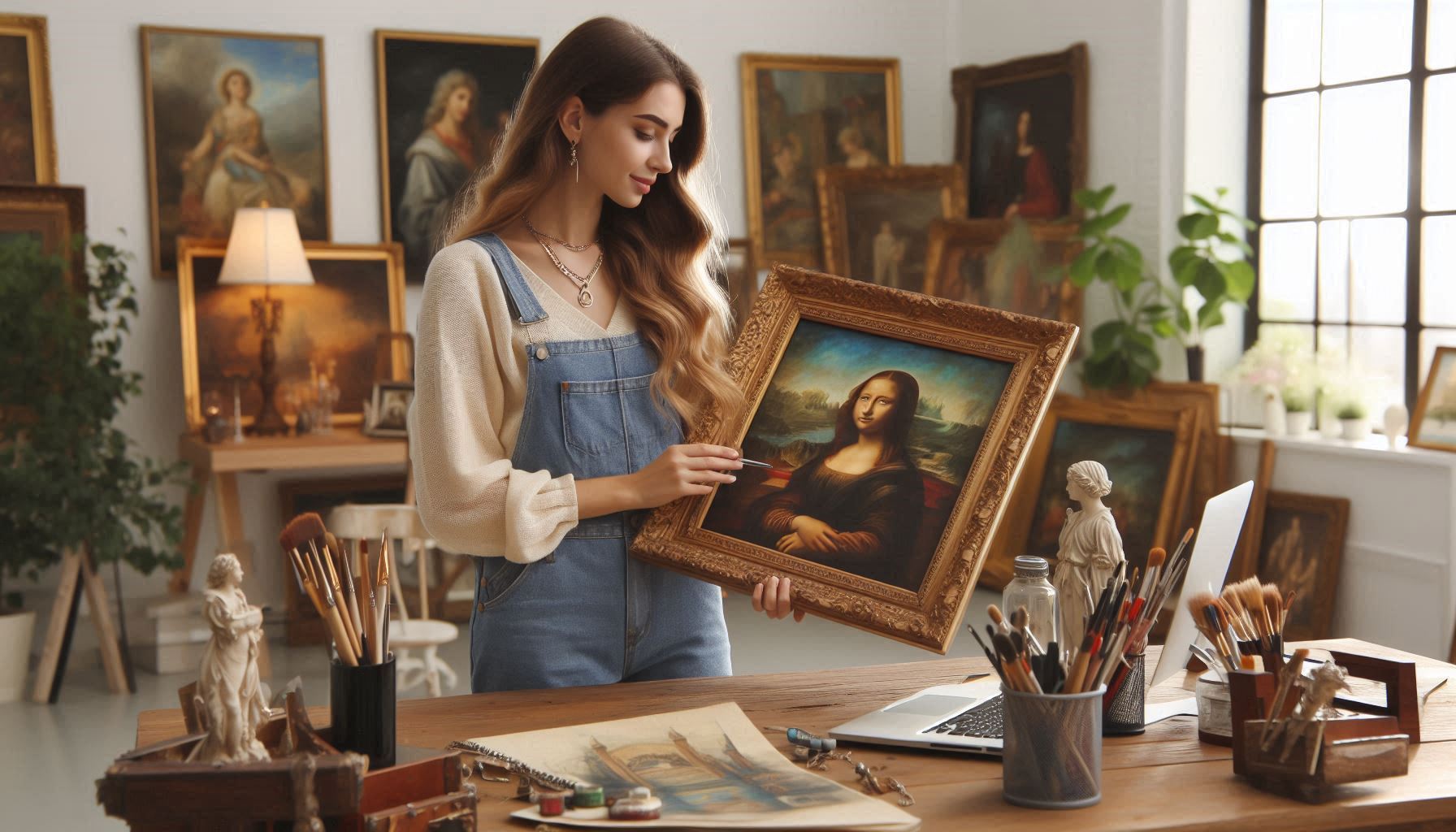The rain was starting to fall when I saw it, propped against a cardboard box at the end of a suburban driveway. The frame was dirty, the canvas dark with age. “Everything in this box, five dollars,” the elderly woman said, already packing up her yard sale. Something about the painting’s eyes seemed to follow me. I handed over my last five-dollar bill.
Today, I run “Lost & Found Treasures,” an art authentication consulting firm that made $875,000 last year. But in July 2022, I was just Rachel Turner, a laid-off art history graduate working as a barista, drowning in student loans.
The Discovery
“You’re collecting junk again,” my roommate sighed as I lugged the painting into our cramped apartment. She wasn’t entirely wrong – our living room had become a graveyard of my weekend yard sale “treasures.”
But this one felt different. After cleaning years of grime off the frame, I noticed a signature in the corner. Three hours of Google searches later, my hands were shaking.
“Hey Dad,” I called, my voice trembling. “Remember that artist you used to restore paintings for in the 80s? The one from the Hudson River School?”
The Verification
My father, a retired art restorer, drove three hours to see the painting. He walked into our apartment, took one look, and sat down hard on our threadbare couch.
“Rachel,” he whispered, “do you know what you’ve found?”
The painting was a lost work by a 19th-century American landscape artist. Value? Potentially six figures. But more importantly, it gave me an idea.
The Beginning
Instead of selling the painting immediately, I used it as a calling card. I approached local auction houses, offering to scout yard sales and estate sales for overlooked treasures. My art history degree finally had a purpose.
The first month, I found nothing. The second month, I discovered a Ming dynasty vase being used as a pencil holder. The third month, I uncovered a collection of early American folk art in a basement.
The System
I developed a methodology:
- Research estate sales in historically wealthy areas
- Study auction records obsessively
- Build relationships with elderly sellers
- Learn the signs of authentic aging versus reproduction
- Trust my instincts when something feels “off”
My father’s restoration knowledge became invaluable. Together, we could spot authenticity others missed.
The Game-Changer
The painting sold for $287,000 at auction. The elderly woman from the yard sale? I split the profits with her. Her gratitude changed my perspective on this business.
“My husband collected art,” she told me through tears. “But I never knew what was valuable and what wasn’t. I just needed to clear out the house.”
That’s when I realized – this wasn’t just about finding treasures. It was about preserving histories and helping families.
The Evolution
I started offering free art authentication workshops at senior centers. Teaching others to recognize value in their possessions led to more discoveries. My reputation grew.
“The Yard Sale Art Hunter,” local papers called me. Features in antique magazines followed. Soon, wealthy collectors were hiring me to attend estate sales as their representative.
Today’s Reality
My company employs five other “treasure hunters” – all art history graduates I recruited from my old university’s barista pool. We’ve discovered over $12 million in overlooked artworks and antiquities in the past year alone.
But we’re more than treasure hunters. We’re story preservers. Each discovery comes with a family’s history, a collector’s passion, a piece of the past waiting to be remembered.
The Education
I still do yard sales every weekend, but now I bring my apprentices. “Look with your heart first, then your eyes, then your knowledge,” I tell them. “The best finds speak to you before you know their value.”
Last month, a young girl watched me examining a painting at her grandmother’s estate sale. “How do you know what’s special?” she asked.
I showed her how to look at brush strokes, signatures, frame construction. Her eyes lit up with understanding. Another treasure hunter in the making.
The Return
The original painting that started it all? I bought it back at auction last year. It hangs in our office conference room, a reminder that every great discovery starts with a five-dollar leap of faith.
Looking Forward
We’re launching a mobile app next month – “Treasure Eye” – that helps people identify potentially valuable artwork in their homes. Because everyone deserves to know what their treasures are worth.
P.S. That elderly woman from my first yard sale? She’s now our company’s senior consultant. “I may not know art,” she says, “but I know what people collect.” Sometimes the real treasure isn’t the painting on the wall – it’s the wisdom of those who hung it there.
The Legacy
Yesterday, I visited a yard sale in the rain. A young woman was selling her grandfather’s art collection. As I helped her identify several valuable pieces, she cried, “I almost put these in the trash.”
That’s why I do this. Every treasure saved is a piece of history preserved, a family’s legacy protected, a story waiting to be told.
That five-dollar painting didn’t just change my life – it showed me how to change others’ lives too, one yard sale at a time.










